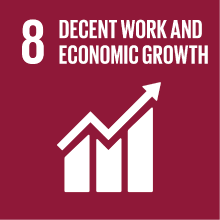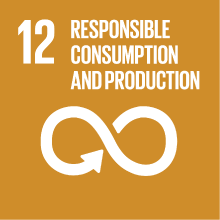ARABIC LANGUAGE 1 MOD.1
- Academic year
- 2022/2023 Syllabus of previous years
- Official course title
- LINGUA ARABA 1 MOD. 1
- Course code
- LM005C (AF:368813 AR:213593)
- Teaching language
- Italian
- Modality
- On campus classes
- ECTS credits
- 12
- Degree level
- Master's Degree Programme (DM270)
- Academic Discipline
- L-OR/12
- Period
- 1st Semester
- Course year
- 1
- Where
- VENEZIA
- Moodle
- Go to Moodle page
Contribution of the course to the overall degree programme goals
The goal is to make them possible to apply their language skills and abilities in communicative situations and in reading texts that require knowledge of sectorial languages related to the fields of society and law. They will thus be able to make their linguistic competence a key tool to understand and interpret the modernity of the Arab countries in its various aspects.
Expected learning outcomes
1. Knowledge and understanding
• Know the key sentences necessary to interact in communication contexts that require knowledge of sectorial languages related to the fields of society, politics and economics.
• Have a solid knowledge of the grammatical system of standard Arabic.
2. Ability to apply knowledge and understanding
• Be able to correctly use the key sentences necessary to interact in communication contexts that require knowledge of sectorial languages related to the fields of society, politics and economics.
• Be able to understand written texts on socio-political topics.
• Be able to translate correctly sentences including intermediate to complex grammatical structures from Arabic into Italian.
3. Judgment capacity
• Be able to assess the level of one’s language knowledge, skills and abilities.
4. Communication skills
• Be able to communicate the specificities of linguistic and textual analysis using appropriate terminology.
5. Learning skills
• Know how to relate the different contexts of study and apply your knowledge and skills for personal and professional growth.
Pre-requirements
Contents
Referral texts
moreover:
Lahlali, M. (2011). How to Write in Arabic, Cairo, AUC Press.
Recommended texts:
Kendall, E. (2005). Media Arabic: An Essential Vocabulary, Edinburgh, Edinburgh University Press
Sirhan, N. (2018). Mastering Arabic Vocabulary for Intermediate to Advanced Learners of Modern Standard Arabic, Routledge, London and New York.
Reference works:
Badawi, E., Carter M. G., Gully A. (2004). Modern Written Arabic: A Comprehensive Grammar, London, Routledge.
Dictionaries:
Traini, R. (1965-1973). Vocabolario arabo-italiano, IPO, Roma
Wehr, H. Dictionary of Modern Written Arabic, 4th ed.
E-learning:
Students are invited to enroll in the Quizlet.com virtual class “Lingua Araba 1.1 – LM005C” (https://quizlet.com/join/Na7ARwCJe ) in order to practice and memorize the vocabulary studied in class.
Useful resources and sites:
Aljazeera Learning Arabic http://learning.aljazeera.net/en || Aswaat arabiyya https://www.laits.utexas.edu/aswaat/index.php || Mumkin.es: http://mumkin.es/ || Advanced Standard Arabic Online https://www.wmich.edu/languages/arabic-online || Dictionaries and glossaries: Almaany: http://www.almaany.com .
Program for non-attendants or those who attend remotely
Students who participate in at least 70% of face-to-face lessons (10 out of 15) are considered "frequentanti" (attending). Those students who do not attend the course or attend it remotely are required to bring a separate supplementary program, in addition to the exam program specified above. The additional program consists of a reading text assigned by the teacher. The student will have to read the text and then write a short paper containing the translation of the text agreed upon, together with a written comment on the morphosyntactic structures of the text. The paper must be delivered at least one week before the oral exam.
Assessment methods
Oral Exam: Conversation in Modern Standard Arabic based on lexicon and structures, as available in the course didactic materials, as well as on Kendall's and Sirhan’s glossaries mentioned in the course bibliography
For non-attending students or those attending remotely: the same examination method as for “frequentanti” (attending students); in addition, delivery of the paper at least one week before the oral exam.
Type of exam
Teaching methods
Teaching is organized in:
a) lectures;
b) exercises
Further information
2030 Agenda for Sustainable Development Goals
This subject deals with topics related to the macro-area "Circular economy, innovation, work" and contributes to the achievement of one or more goals of U. N. Agenda for Sustainable Development


